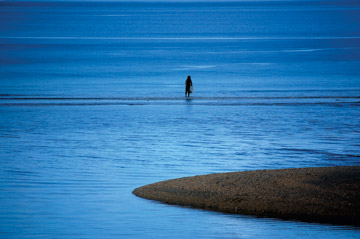Number 144 (May-August 2014)
Editorial
The table of contents for this issue reveals a theme that is very common to fisheries: a mix of hope and worry. Most articles fall into the hope category, and are related to development, with titles including words such as “new”, “improved”, “successful”, “creating”, “promising” and “project”. But other article titles make use of words such as “burning”, “yellow card”, “microplastics” and “hot issues”, a reminder that fisheries stories are not all good news.
These articles reflect a challenge that government bodies and agencies involved in fisheries constantly face: finding the right balance between development and management efforts.
In the Pacific Islands region, all of the major fisheries have already been developed, several of them “overdeveloped”. There is scope for the limited development of a few minor fisheries (e.g. aquarium fish, coastal pelagic fish and giant squid), and aquaculture certainly has potential. But, these will not produce enough to replace coastal fisheries if these are not properly managed. In other words, if the main focus is not on management, these development efforts may be just a little more useful than a band-aid on a wooden leg.
In his article on page 53, Robert Gillett writes: “In fisheries management, the hardest task is often the placing of controls on fishers to prevent resource degradation”. He notes that alternative development schemes are often used as ways to avoid necessary restrictive management. Interestingly, he names it “management distractions” and cites it as one of the hot issues on Pacific Island coastal fisheries.
Development or management, development and management... Pacific Island fisheries require that development become no more than a fully integrated part of management.
Aymeric Desurmont
Fisheries Information Specialist
In this issue
SPC ACTIVITIES
-
Integration of fisheries and protected areas management for Palau’s northern reefs (pdf: 411 KB)
-
New assessments for WCPFC to ponder (pdf: 106 KB)
-
Tuna tissue bank for ecosystem management in the Pacific (pdf: 258 KB)
-
Creating an aquaculture industry for a new type of freshwater prawn in Papua New Guinea (pdf: 226 KB)
-
Improved cottonii (Kappaphycus alvarezii) seaweed variety transferred to Kiribati and Fiji (pdf: 104 KB)
-
New aquaculture project that targets communities (pdf: 250 KB)
-
Successful diamondback squid fishing trials in Fiji (pdf: 314 KB)
NEWS FROM IN AND AROUND THE REGION
-
Promising results for sandfish and white shrimp farming in Fiji (pdf: 174 KB)
-
Over USD 1.3 million in 48 days of harvest - Palau shares lessons on sea cucumber management (pdf: 341 KB)
-
Community-based fisheries management project in Kiribati: First steps (pdf: 190 KB)
-
We are “burning both ends of the candle” (pdf: 228 KB)
-
Assisting Papua New Guinea with the European Union “yellow card” for IUU fishing (pdf: 142 KB)
FEATURE ARTICLES
-
In a nutshell: Microplastics and fisheries
by Ana Markic and Simon Nicol (pdf: 86 KB) -
Shark-watching ecotourism in the Pacific islands: A move towards “payments for ecosystem services”?
by Eric Clua and Nicolas Pascal (pdf: 251 KB) -
Presenting a new direction for small-scale marine protected area design
by Abigail Golden (pdf: 171 KB) -
New FAD development approach strengthens community-based fisheries management in Vanuatu
by George Amos et al. (pdf: 1 MB) -
Diamondback squid and egg mass record in Vanuatu
by Graham Nimoho et al. (pdf: 525 KB) -
Hot issues on Pacific Island coastal fisheries
by Robert E. Gillett (pdf: 512 KB)



